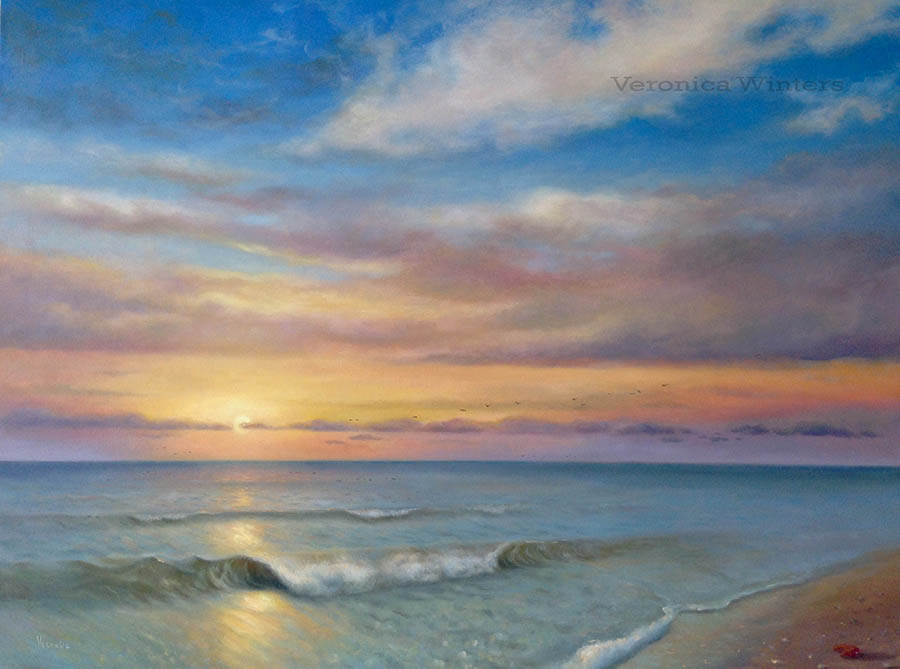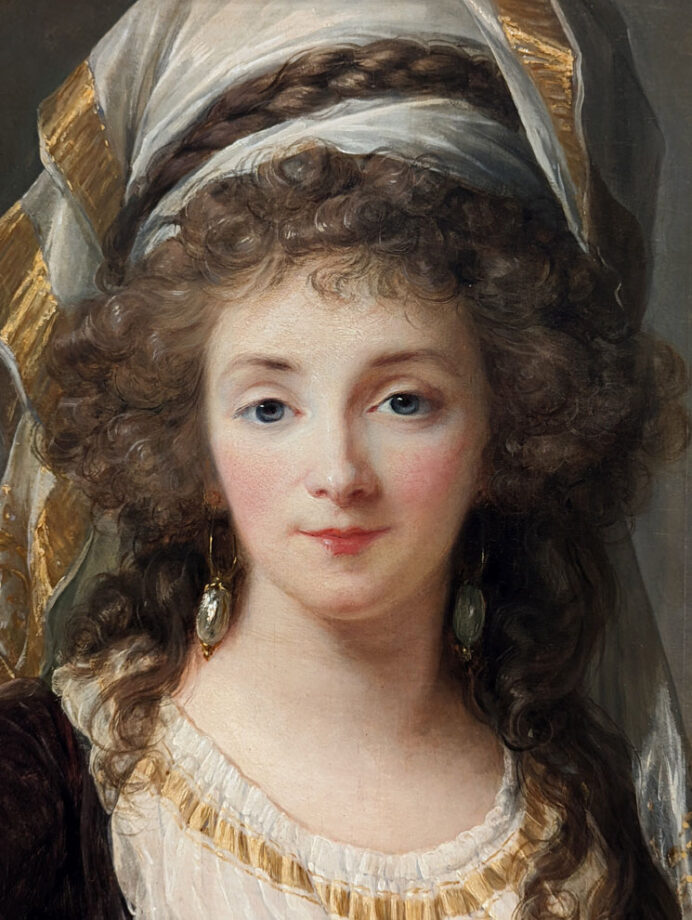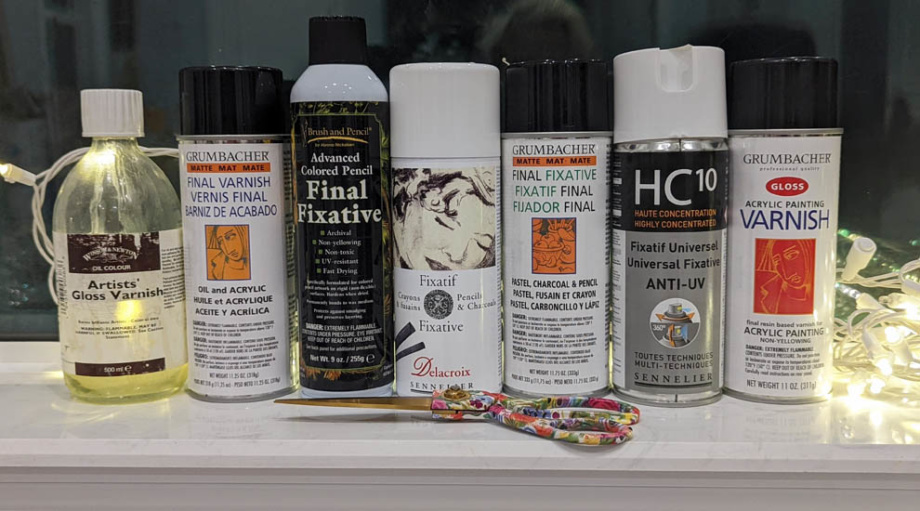Here I’d like to explain reasons why cracks appear on the surface of oil paintings and how to prevent this from happening in either your own painting or art collection. If you’re a savvy collector of art, you must know main reasons why cracks appear. Obviously the older the painting, the more cracks you might see in your art down the road because art ages too.
Why do oil paintings crack?
Many famous artists – including da Vinci, Reynolds and Rothko–experimented with their art materials creating oil paintings. For this reason contemporary conservators study artists’ process to understand how they can fix the oil paintings using correct solvents, paints and varnishes.
The oil paint cracking depends on the artist’s process completing the work. Most artists (especially hobby painters) have no clue how the quality of art supplies affects their art long term. Of course, it doesn’t matter if you’re just learning, practicing and making sketches. But if the aim is to create museum-quality art, you must start thinking how you use your art materials. I think art collectors also need to be aware of these issues to ask artists the right questions. All of us buy art based on emotion and what we react to in the painting visually but if the art is really pricey it’s worth understanding why cracks appear in oil paintings because it can devalue your art collection or be difficult to fix the canvas in a few years.
White paint
Scientists at the Smithsonian’s Museum Conservation Institute found that zinc white in oil paint creates permanent problems that lead to paint cracks and peel off of the paint. Many white colors have some zinc white in them that makes the pigment brittle with age.
Read labels carefully. It often says ‘Titanium dioxide (PW 6), zinc oxide (PW 4)’. Your titanium white oil paint should have PW6+linseed oil only. You’ll see that cheap paint is cheap for a reason – it has a lot of additives and PW4 mixed into it.
Mediums
All tubed oil paint has some oil mixed into the paint along with some additives to keep it fresh. Linseed oil is the most stable oil that is also used widely as paint medium by artists. It’s long-lasting and dries quite quickly. The disadvantage is that it may yellow over time.
Safflower oil, poppy oil, and walnut oil are less stable oils often used as vehicles that are mixed into the oil paint. Avoid using safflower oil. Walnut oil slows down the painting time and it doesn’t yellow. Consider using it instead of linseed oil if you’d like.
When there is a lot of medium mixed into the paint especially in the underpainting layers, cracks may appear after a while. Try to paint with the lead white and a small amount of linseed oil. Add a bit of the medium in the top layers of painting.
Layering of paint
If artist painted over the wet or semi-dry layer of oil paint, the lower layer didn’t have enough time to dry completely. It may cause cracking.
Surface
Oil paint doesn’t stick well to a very smooth surface and doesn’t form a permanent bond necessary to preserve the art well. Low-quality gesso (white ground you see on canvases and panels) doesn’t allow for proper adhering of paint. Cracks or flacking of paint may happen. Don’t paint on cheap canvases sold at craft stores. The quality of gesso and canvas is poor and the paint won’t adhere to the surface permanently.

Climate
If you live in a hot and humid climate like Florida, it’s very important not to adjust your thermostat changing temperature and humidity levels when you leave the house. Why? Because if you own original art on canvas the surface expands and contracts all the time straining the paint layers. This is one of the main reasons why you see cracks in the old master paintings…And those that keep up their shape were painted on wood panels…Know that panels provide a much better painting support and don’t warp or fluctuate as much as regular canvas does. It doesn’t mean that you’re doomed having art on canvas however.
Oil paint application over the acrylics
I came across a really useful article recently that explains what happens when you apply oil paint over the acrylics. It’s fairly known that if you underpaint in acrylic paint, you must wait for 3 days for acrylic paint to settle before working in oils. Even when acrylics are dry to the touch, they go through a molecular process of drying out called “coalescence”. When the acrylic paint dries out in 3+ days you can resume painting over it in oils. This is where new research comes in handy.
In this new article https://justpaint.org/revising-our-recommendations-for-using-oils-over-acrylics/ Greg Watson states that the painting support doesn’t play the major role leading to oil paint cracking, rather it’s the application of oil paint itself. “In testing if cracking happens, it happens during the early stages of drying – as the paint transitions from being wet to touch dry. Fast-drying colors like Mars Yellow or colors that are susceptible to this type of cracking like Ultramarine Blue, may develop hairline cracks within a day or two. Slower drying colors can take weeks or even a month to show any issues, if ever. It appears this cracking does not develop further once the color is fully touch dry.”
Also “cracking is mostly happening in oil paint or oil ground with no oil or solvent added, applied directly out of the tube or container over the acrylic surfaces. These oil applications are roughly between .05mm and .25mm, which is the thickness of 1-5 sheets of office paper. Layers that are thinner or thicker do not seem to crack. Glossy acrylic mediums and gels are associated with the most cracking in lean oil layers applied on top.”

Prevention
So use three layers of gesso to paint with oils or acrylics. If you oil paint over acrylics, wait for 3 days to do so, then use the oil painting medium ( linseed oil) to dilute the oil paint some. And don’t paint over glossy acrylic mediums/ products! The oil paint doesn’t stick to the surfaces that are too smooth or glossy.
1. Frame art with real wood frames that provide lots of support. Use cross braces if oil paintings are large to prevent twisting and warping of stretcher bars.
2. Keep your room temperature & humidity levels stable.
3. Avoid strong, direct light or sunlight. Oil paintings may fade, especially if they were painted with cheap oil paints.
4. Panels provide a much better support than canvas. Aluminum, wood panels, copper panels, etc.
5. Ask the art dealer, gallery owner or artist how art has been kept before you take possession of it. Inspect the art yourself looking at the back of canvas as well as at the front. If canvas has small holes they could be fixed by gluing a piece of canvas on the back.
6. One more thing, don’t hang original art in bathrooms. Moisture, temperature and high humidity may change in these rooms several times a day as you take a shower or bath leading to fast deterioration of oil paintings.
Art collecting is a lot of fun. Just be aware of the problems that could arise with paintings and make informed decisions buying oil paintings. Are you a collector of art? Share your experiences: nika@veronicasart.com
Check out visionary art for sale
To read more:
